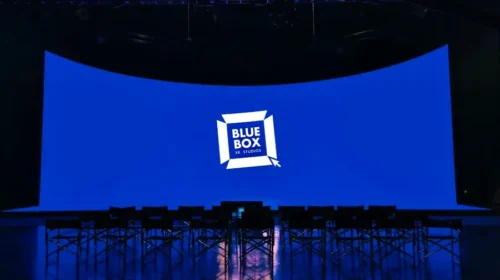Xtep takes a breather after marathon pandemic sprint

The athletic footwear maker said its growth began to slow in this year’s first quarter as life started returning to normal in China with the end of pandemic restrictions
Key Takeaways:
- Xtep said it recorded retail sell-through growth of 20% in the first quarter, down sharply from the 30% to 35% growth a year earlier
- The athletic sportswear maker’s sales last year were nearly 60% above 2019 levels, fueled by growing health awareness during the pandemic
By Doug Young
Athletic apparel has been a countercyclical performer during the pandemic, boosted by growing health awareness among millions of Chinese during the turbulent period. But after posting stellar growth during that time, even as other major retail sectors faltered, the industry may be set for a breather as the pandemic finally begins to fade.
That’s the message coming through in some limited data contained in a first-quarter update from Xtep International Holdings Ltd. (1368.HK). The company started out as a maker of athletic footwear for other major brands, and has moved into the more lucrative business of developing its own Xtep brand over the last 20 years.
Xtep was a major corporate beneficiary of the pandemic due to its focus on running shoes, since many people turned to the activity to stay fit over the last three years. That shows up in its revenue, which topped out at a record 12.9 billion yuan ($1.9 billion) last year, nearly 60% higher than the pre-pandemic figure of 8.2 billion yuan in 2019.
But, as the saying goes, all good things must end. Or at least in Xtep’s case, it seems that it’s time for a breather from its breakneck growth of the last three years.
According to its update filed late Tuesday, Xtep reported retail sell-through growth of around 20% in the first three months of this year. That’s an improvement from a decline on that basis in last year’s fourth quarter during some of China’s harshest-ever Covid controls, which included large-scale store closures. But the latest figure also represents a relatively sharp slowdown from the 30% to 35% growth for that metric in the year-ago quarter.
The latest figure, which looks like a gage of broader revenue growth, also represents a slowdown of the nearly 30% revenue growth the company recorded for all of last year.
At the same time, Xtep said its retail discount level during the first quarter was between 25% and 30%. Again, that represents a slight deterioration from the 25% discount level in the year-ago quarter, as the company offered bigger discounts this year to sell its products. Channel inventory turnover, the other metric it provided in the update, also deteriorated slightly to “less than five months” from four months in the first quarter of 2022.
Shareholders weren’t too shocked by the slowdown, with Xtep shares falling by a relatively small 0.5% on Wednesday after the announcement. They gained all of that back in early Thursday trade, again showing investors weren’t too concerned by what they saw.
Another first-quarter update that came out around the same time from larger rival Anta (2020.HK) showed similar growth trends. Anta said sales for its core Anta and Fila brands posted mid- to high-single digit percentage growth in the first quarter. In Anta’s case that represented an improvement from its 8.8% overall revenue growth last year. Investors didn’t seem too impressed or worried with the Anta forecast either, bidding down its shares by a slight 0.8% in late Thursday morning trade the day after the announcement.
Pandemic plays
Xtep and its peers have done quite well during the pandemic, and continue to be strongly favored by investors even as a period winds down that most other retailers would rather forget. The company’s stock is up about 13% so far this year, and currently trades at a price-to-earnings (P/E) ratio of 21 – a relatively high level for this kind of traditional retailer. Most other Chinese retailers don’t even have positive P/E ratios because they lost money last year.
Among its peers, Xtep trades below China’s better-known Anta and Li Ning (2331.HK) brands, which have current P/E ratios of 36 and 31, respectively. But it trades ahead of the 10 for lesser-known 361 Degrees (0361.HK), which focuses on smaller cities. That shows that, at least in China, valuations are very much tied to a brand’s level of public awareness.
Pandemic aside, Chinese athletic brands have also enjoyed a strong period over the last few years due to shifting preference by local consumers, partly due to improving perceptions of homegrown brands in general.
Part of the growing preference for local names also owes to a recent shunning of foreign brands by Chinese consumers after some of those brands boycotted Chinese cotton two years ago over allegations of abusive labor practices. As those negative perceptions start to fade, Chinese consumers may naturally return some of their focus to overseas brands that previously enjoyed a strong reputation for quality, which may also underlie the latest slowdown for the Chinese brands.
Whatever the reasons, the investment community does expect Xtep’s sales to slow down a bit this year. The average among 26 analysts polled by Yahoo Finance expect the company’s revenue to rise about 16% in 2023 to about 14.9 billion yuan, slowing down by about half from the 29% growth rate for 2022.
Over the longer term, Xtep and its peers still do look relatively well positioned to profit from China’s growing health awareness, which is being actively promoted by Beijing. In its latest annual results, Xtep noted that sportswear sales in China grew 2.2% last year, even as broader consumer goods sales fell 0.2% for the year, “mainly driven by the pursuit of healthier lifestyles of the Chinese people during the pandemic.”
At the same time, it noted the government’s greater focus on physical education in primary and secondary schools, including a greater weighting of physical education in standardized tests, is “creating tremendous opportunities for the sports industry in mainland China.”
At the end of the day, Xtep looks like a strong bet to benefit from such trends over the longer-term. But for shorter-term investors, the company and its peers could experience a slowdown this year that is perhaps slightly overdue, as Chinese consumers return to some of their pre-pandemic lifestyle habits that include less emphasis on health and also a partial return to earlier preferences for foreign brands.
To subscribe to Bamboo Works free weekly newsletter, click here






